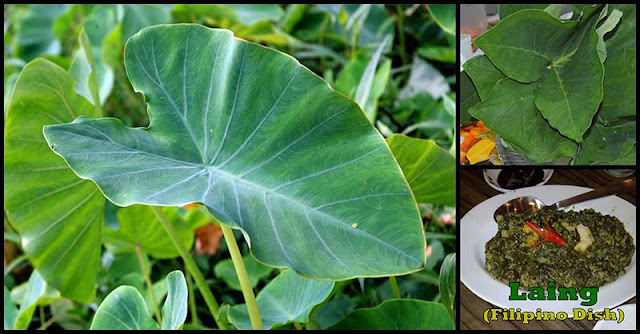Taro leaves are dark green leaves with a smooth surface and light green underside. These leaves, which are botanically classified as Colocasia esculenta, have been used as a staple food and as a natural medicine for some illnesses. They are an excellent source of dietary fiber, calcium, vitamin A, vitamin B6, vitamin C, iron, phosphorus, thiamin, riboflavin, copper, niacin, potassium, manganese, and zinc.
Impressive Health Benefits Of Taro Leaves
Helps Boost The Immune System
A cup of taro leaves can provide our body with significant amounts of vitamin C. It can give us at least 86% of the daily value that our body needs in order for us to boost our immune system and be able to fight various infections.
Helps Keep Your Eyes Healthy
Significant amounts of vitamin A is also present in taro leaves. This vitamin is needed in maintaining eye health and prevent eye diseases such as blindness, cataracts, and myopia.
Helps Reduce Cholesterol Levels
Due to its richness in dietary fiber and methionine, taro leaves can help reduce the body’s cholesterol levels. They work by binding and breaking down fats and cholesterol.
Helps Control Blood Pressure
Thanks to the leaves’ anti-inflammatory compounds and potassium content as it can help lower down chronic inflammation and blood pressure. Additionally, its omega-3 fatty acids help provide material for hormones to control the contraction and relaxation of the arteries wall, thus controlling blood pressure to a normal level.
Helps Prevent Cancer
Vitamin C, a water-soluble antioxidant, is richly found in taro leaves. According to studies, this vitamin can help inhibit the growth of cancerous cells and lower the progress of cancer cell proliferation. Taro leaves have been found to be beneficial in fighting breast cancer and colon cancer.
How To Eat Taro Leaves
Bring a pot of water to boil on the stove and add your desired amount of leaves to the boiling water. Allow the leaves to boil for 10-15 minutes and then drain the leaves thoroughly and add them to various dishes.
Taro leaves pair well with onion, garlic, and ginger, chilies, fish, chicken, pork, and beef, dried shrimp, coconut milk, fish sauce, tomatoes, sweet potato, and chickpeas. They can be spread with a spiced chickpea paste, steamed, sliced, rolled, and deep-fried or rolled up tightly and tied into knots and simmered in coconut, red chili, tamarind, coriander, and garlic. They can also be an excellent accompaniment to curries and dishes containing coconut milk. In the Philippines, both dried and fresh taro leaves are being used in a dish called “laing,” a stew that can include shrimp or crab and often paired with steamed rice.









